Huawei Technologies, known primarily as a supplier of network and telecommunications equipment, launched a powerful onslaught on the global server market more than five years ago, aiming at increasing its brand awareness among corporate server customers. In addition, the company is trying to create advantages for itself thanks to an impressive investment in research and development.
The subject of this review is the 2U
Huawei RH2288 V3 two-socket rack server. According to the manufacturer, its main task is the processing and storage of data of responsible applications in a small rack space. Huawei RH2288 V3 servers are suitable for working with Internet applications and important corporate systems, for processing and storing big data, cloud computing, and providing telecommunication services. They are used by hosting providers and VPS, for example, RUVDS is the official partner of Huawei.

In particular, as part of a joint project, the vendor equips RUVDS data centers in Russia, the UK and Switzerland with their equipment. Currently, more than 200 RH2288 V3 servers have been installed in the company's data centers. This ensures fast and stable operation of virtual servers, allows us to offer customers high-quality and modern services. In addition, these reliable server platforms allow you to optimize the cost of services provided to customers.
The hosting platform RH2288 V3 is ideal for hosting and therefore has become a logical choice for equipping RUVDS data centers. We will also get acquainted with these servers in this review.
The developers of the RH2288 V3 tried to achieve an optimal ratio of performance and density of placement of system components. The server provides a large storage capacity, the possibility of expansion and relatively high computing power. Its
closest competitors are HP DL380p Gen9, IBM x3650 M5, Dell R730xd and Cisco C240 M4.
To improve energy efficiency, it implements intelligent power management technologies: dynamic power management; provision of power supply resources and cooling, if necessary; proportional-integral-differential regulation to control the heat exchange process and control the speed of rotation of the fans. Server intelligence is not limited to this: the data logging system helps to find problems that led to the failure.
Using the LED panel, you can perform local management operations, and through an independent iBMC module, you can perform remote tasks using a serial console (Serial over LAN, SoL), KVM for remote access, and other functions. The iBMC control controller is designed on Huawei's own chip and comes bundled with the server for free.
Specifications RH2288 V3
CPU
| One or two Intel Xeon E5-2600 V3 / V4 series processors
|
Ram
| 16 modules RDIMM / LRDIMM DDR4
|
ROM
| Hard Disk Configurations:
- 8 solid state drives or 2.5-inch hard drives with SAS / SATA interfaces;
- 12 3.5-inch HDDs with front-side SAS or SATA interfaces, or 2 or 4 2.5-inch or 3.5-inch SSD or SAS or SATA HDD hard drives;
- 12 3.5-inch HDDs with SAS or SATA interfaces on the front side (the NVMe model supports 4 solid-state drives with NVMe interfaces) and two 2.5-inch or 3.5-inch SSDs or SAS or SATA HDDs on the back;
- 24 2.5-inch hard drives or solid-state drives with SAS or SATA HDD interfaces;
- 25 hard drives or 2.5-inch solid-state drives with SAS or SATA HDD interfaces on the front side and two or three 2.5-inch hard drives or solid-state drives SSD or SAS or SATA HDD on the back side.
2 SD cards.
|
RAID level support
| - RAID 0, 1, 10, 5, 50, 6, or 60;
- Additional supercapacitor;
- Changing the RAID level without shutting down the system, configuration memory, self-diagnostics and remote configuration via a web interface.
|
LOM network ports
| 2 GE or 4 GE ports or 2 x 10 GE ports or 2 x 56 Gbps FDR InfiniBand ports.
|
PCIe extension
| Up to 6 PCIe 3.0 slots.
|
Fan modules
| Fan modules in N + 1 redundant mode, hot-swappable.
|
Power supplies
| Two PSU power supplies in 1 + 1 redundant mode, hot-swappable.
|
Control
| - Huawei Hi1710 control chips and independent ports are used, standard SNMP and IPMI management interfaces are supported, a graphical user interface, KVM tools for remote access, a virtual environment, SOL, a predictive failure analysis tool (PFA), an intelligent power supply, remote control functions are provided and equipment monitoring.
- It supports Huawei eSight control software and integration with third-party management systems, such as VMware vCenter, Microsoft System Center and Nagios.
|
Working temperature
| Compatible class ASHRAE A3 and A4. That is, RH2288 V3 operates at a temperature of 5 ° C- 45 ° C.
|
As you can see, the Huawei server outperforms its competitors in the number of hard drives. The RH2288 V3 supports 16 3.5 "hard disk drives or 28 2.5" hard disks. The Huawei RH2288 V3 server comes with 9 PCIe expansion slots (one of which is used to install a RAID controller).
In competitive solutions, expansion slots are smaller, and the RAID controller is embedded. There is one SD card in them, while the Huawei server supports two built-in SATA DOM drives or two SD cards. At RH2288 V3, and this is the third generation of this server model, a wider range of operating temperatures, not only problems detected by diagnostic tools are fixed in the logs, but also such events as opening and closing the chassis.
Remote server management is performed using an iBMC controller, which functionally differs little from competitors' developments, but it is worth noting that the controller supports KVM over IP with Full HD resolution.
This is the server logicSo, proceed to unpacking. The server came to us in such an unremarkable box with the Huawei logo. Inside, besides the server, there was a kit for installing it in a rack on sliding rails - the Rail Kit.
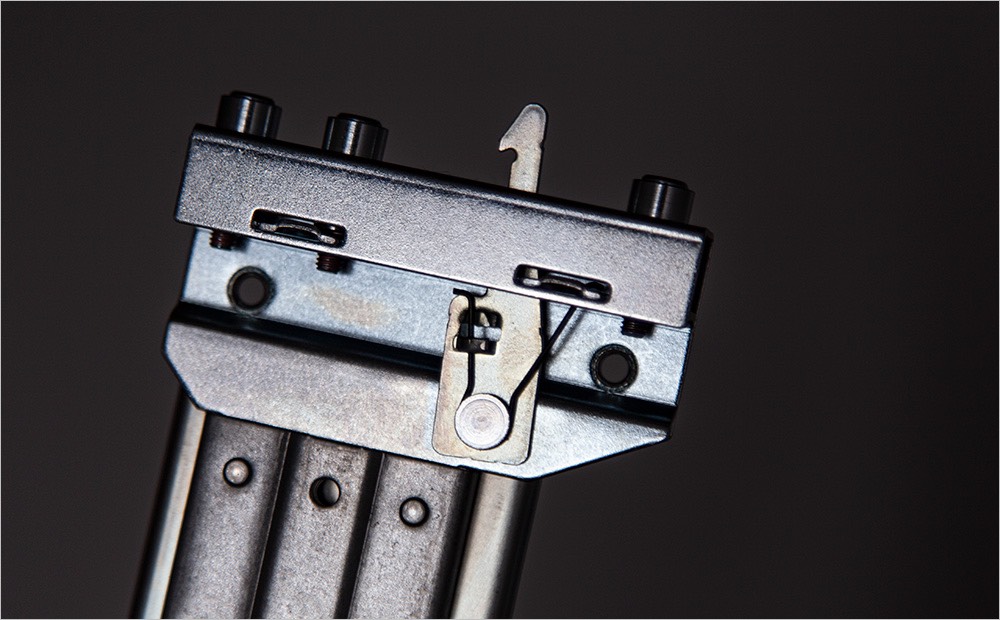
Its design is thought over to trifles: the spring-loaded clamps provide fast and reliable fastening of a design.
There was also a quick installation guide for the server - Quick Start Guide (clickable):
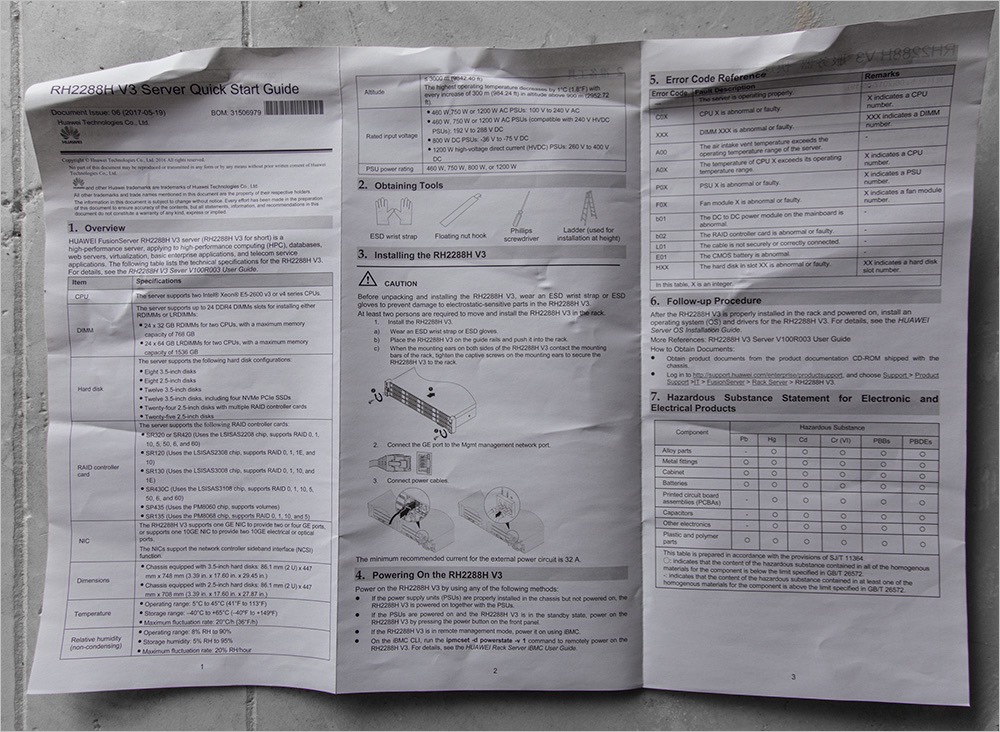
And here is the server itself with its solid storage - in this configuration these are SAS hard drives with 10K capacity of 900 GB and SATA 7.2K with 2 TB, plus SATA SSD with 960 GB. With such an arsenal, you can organize a tiring - multi-level data storage.

Note that the RH2288 V3 uses hot-swappable SATA hard drives, SAS hard drives, or SSDs. It supports RAID 0, 1, 1E, 10, 5, 50, 6 and 60.
 By the way, SSD from Huawei are built on MLC flash memory. Their presence allows you to speed up the operating system.
By the way, SSD from Huawei are built on MLC flash memory. Their presence allows you to speed up the operating system.
An LED indicator on the front panel helps to monitor the server’s “health”. Below - the UID indicator and the power button. The UID button / indicator helps identify and locate the server in the rack. You can enable or disable the UID indicator by manually pressing the UID button or remotely by executing a command in the iBMC CLI. This button also resets the iBMC.
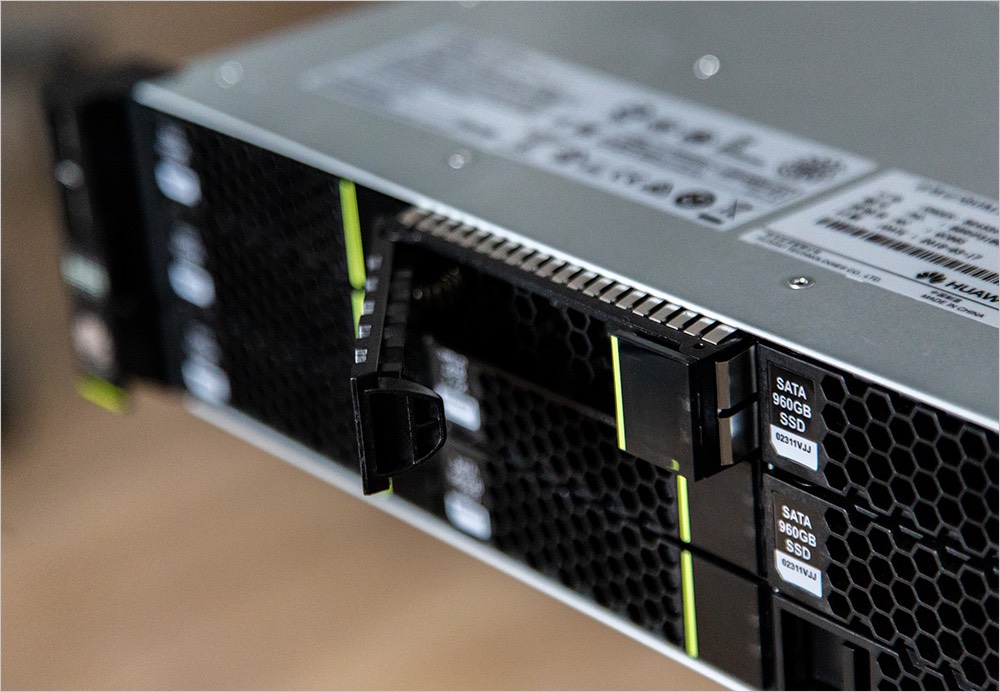
Removing the drive is simple - you need to open and pull the handle. The RH2288 V3 uses hot-swappable hard drives. The server supports the following hard disk configurations:
- 8-disk configuration: up to 8 x 2.5-inch SSD or SAS / SATA HDD;
- 8-disk configuration: up to 8x 3.5-inch SAS / SATA hard drives;
- 12-disk configuration: up to 12 x 3.5-inch SAS / SATA hard drives;
- 12-disk configuration: up to 8 x 3.5-inch SAS / SATA hard drives and four NVMe PCIe SSDs;
- 24-disk configuration: up to 24 x 2.5-inch SSD or SAS / SATA HDD;
- 25-disk configuration: up to 25 x 2.5-inch SSD or SAS / SATA HDD.
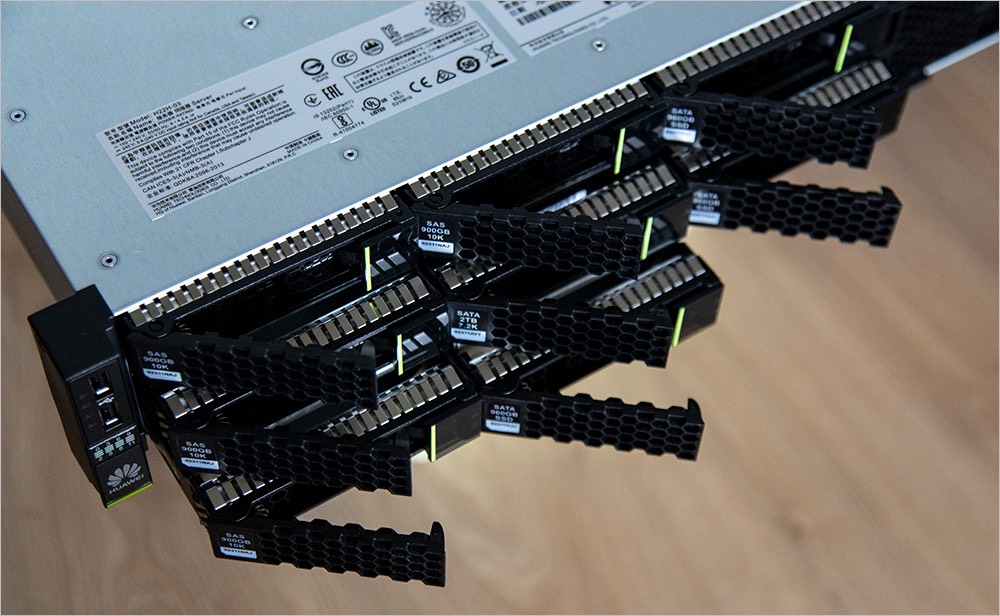
Thus, the server can be equipped with 25 disks from the front panel, and all of them can be connected to the LSI RAID controller.
 Included are HGST enterprise-class wheels.
Included are HGST enterprise-class wheels.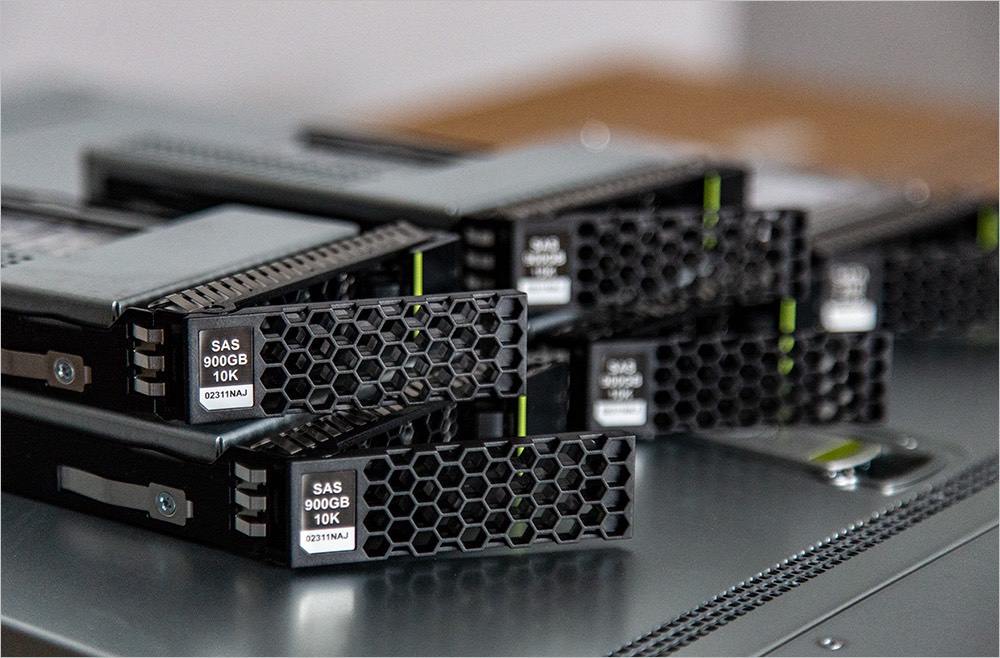 HDD / SSD baskets are easily removed from the front panel of the server.
HDD / SSD baskets are easily removed from the front panel of the server.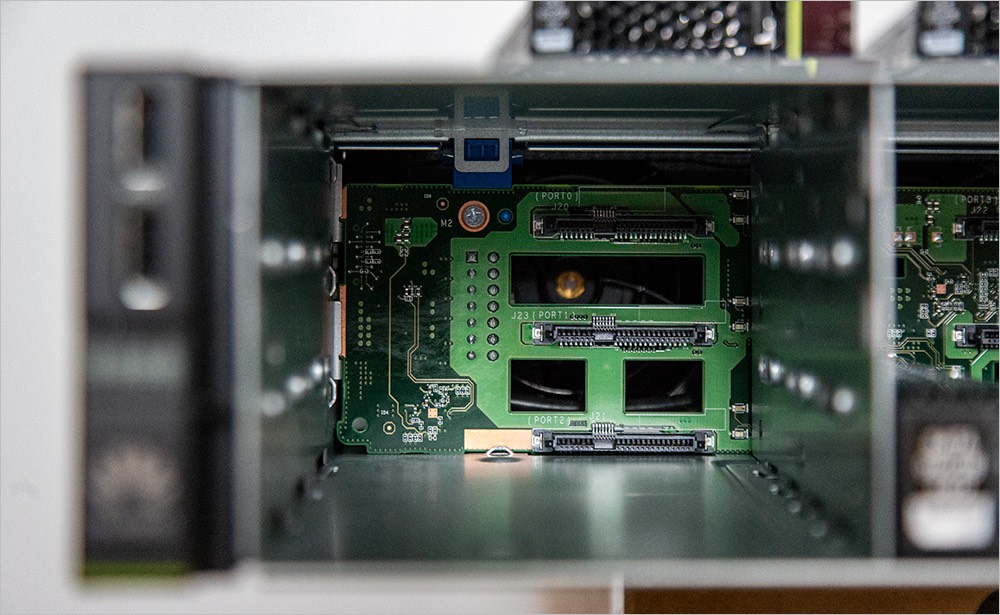

 But the numbered ports in the chassis of the server, with which these baskets are joined.
But the numbered ports in the chassis of the server, with which these baskets are joined.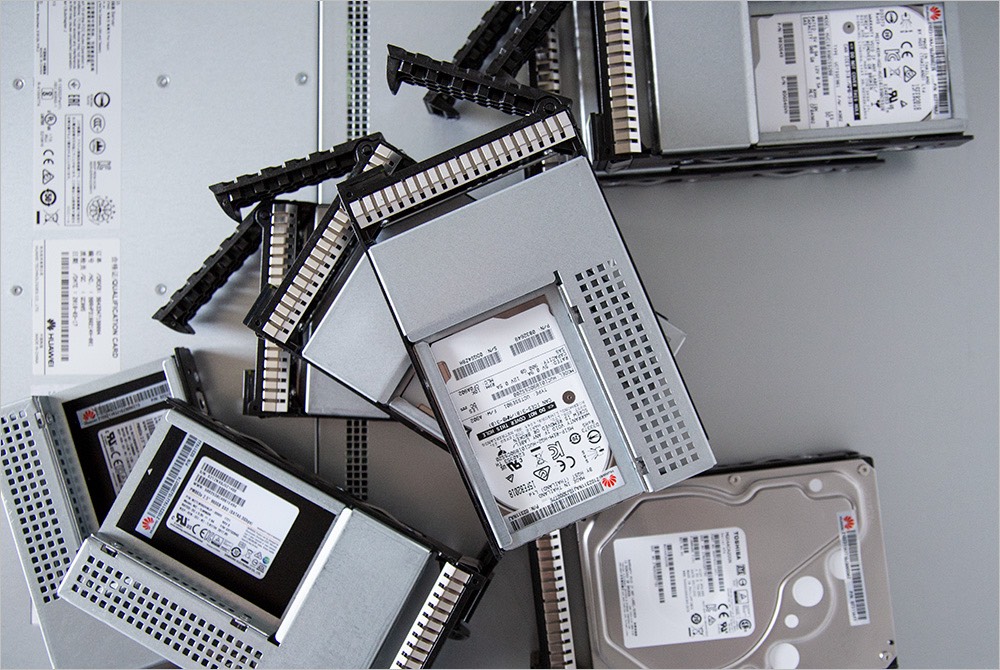 A variety of form factors and types of drives.
A variety of form factors and types of drives. Network port status indicators 1 through 4
Network port status indicators 1 through 4
Fans and power supplies. The RH2288 V3 has two hot-swappable power supplies, they operate in 1 + 1 redundancy mode. You can select the following types of power supplies:
- AC power supplies: 100 to 240 V;
- DC: -48 V to -60 V;
- 240 V DC with high voltage (HVDC): 192 V to 288 V;
- Power supplies from 260 V to 400 V DC.
Power supplies provide short circuit protection. 1200 W power supplies allow the server to support the most powerful Intel processors.
 Hot-swappable fan modules are used for cooling.
Hot-swappable fan modules are used for cooling.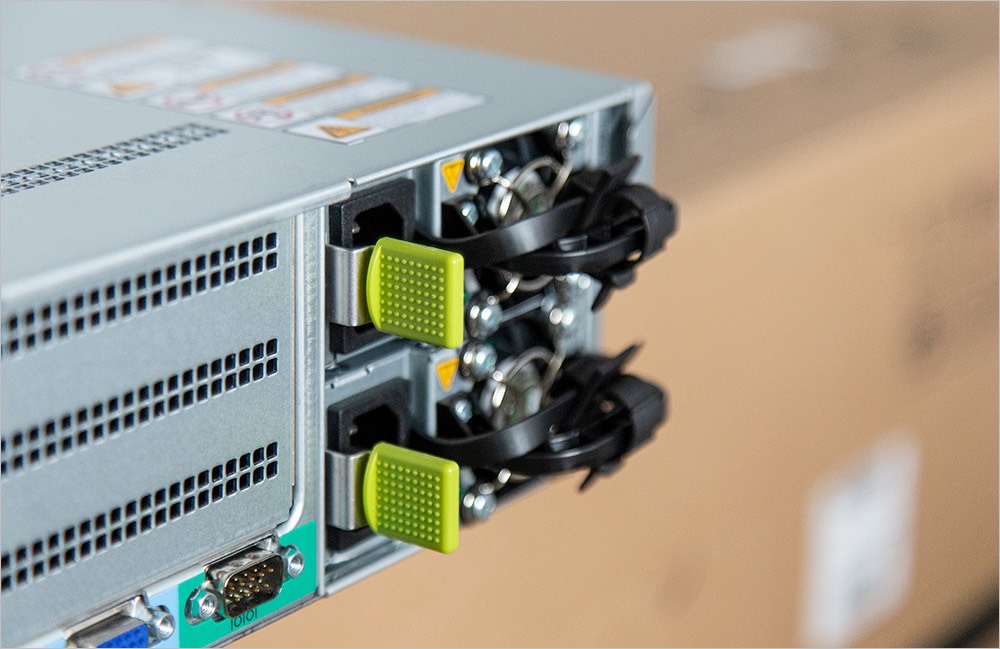 Reasonableness to detail: so you can easily remove the power supply.
Reasonableness to detail: so you can easily remove the power supply. Below are USB ports, a network management port, a VGA port and a serial port. 4 and 5 are standard PCIe slots.
Below are USB ports, a network management port, a VGA port and a serial port. 4 and 5 are standard PCIe slots.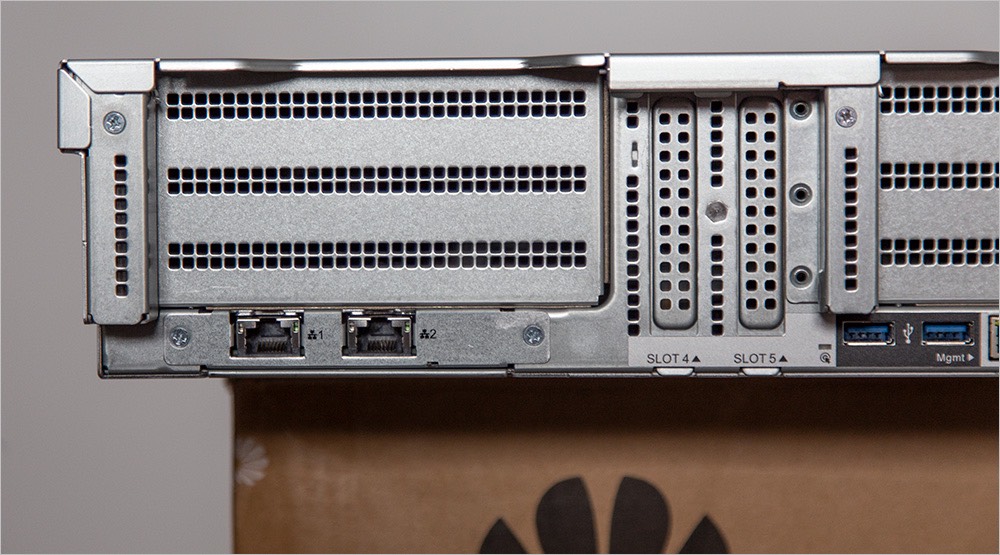 At the bottom left - network ports 1 and 2.
At the bottom left - network ports 1 and 2. This is how the server looks entirely - the rear view.
This is how the server looks entirely - the rear view.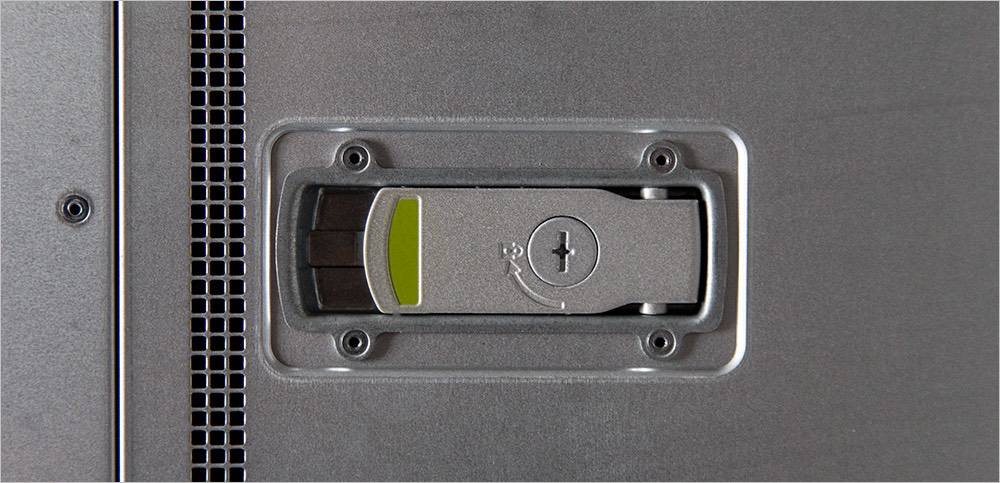 The body cap release handle gives access to the internal components of the system.
The body cap release handle gives access to the internal components of the system.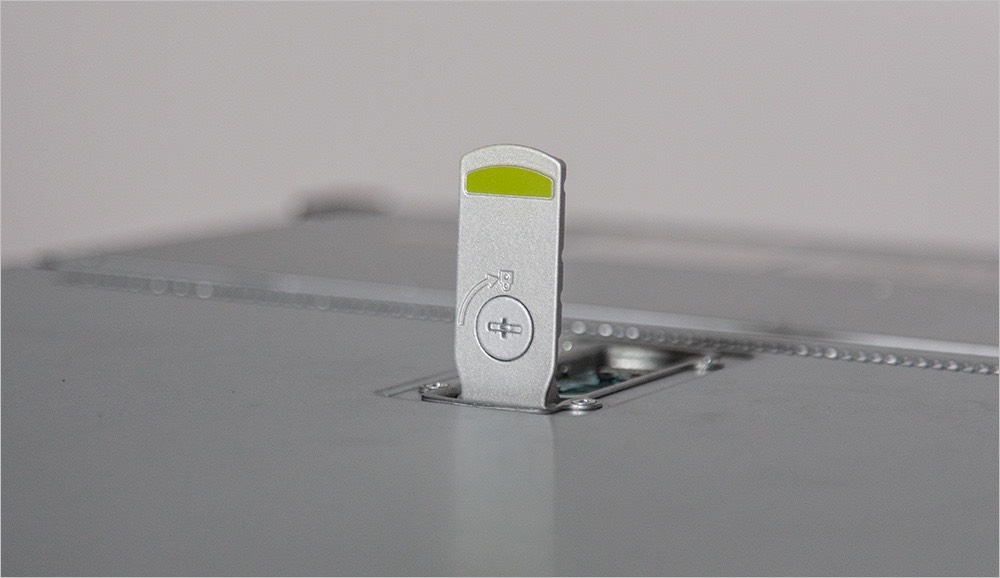 And the casket just opened ... For this, there is a special multitool in the kit.
And the casket just opened ... For this, there is a special multitool in the kit. [clickable]
[clickable]As usual, inside the cover (by the way, made of steel) - detailed diagrams and explanations of what is what. Here you can find the front and back panel of the server, motherboard, memory configuration.
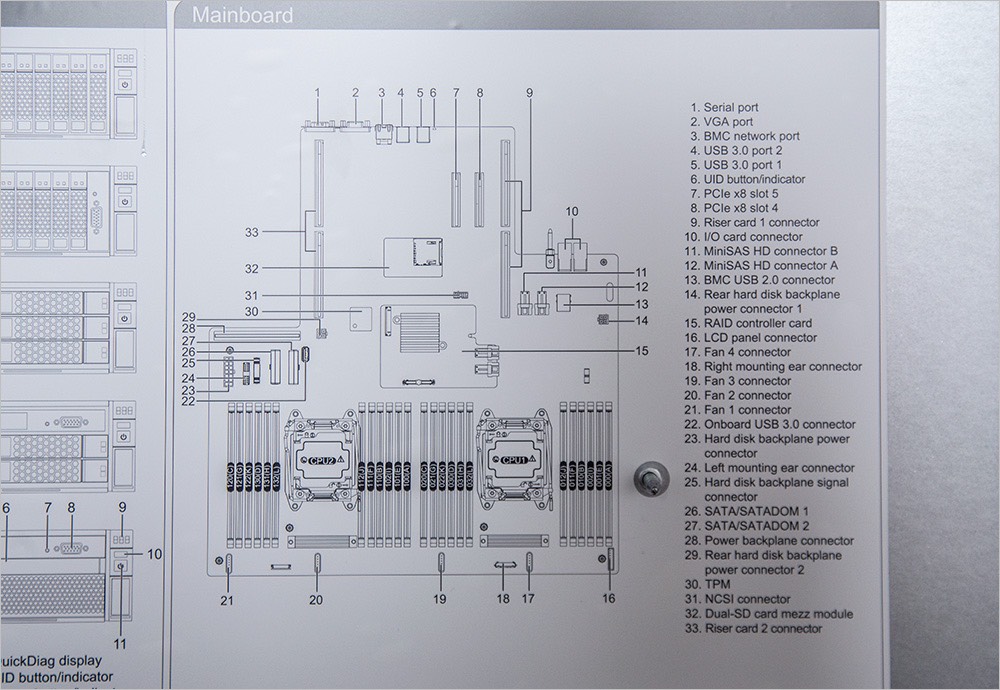 [clickable] Motherboard layout with detailed components.
[clickable] Motherboard layout with detailed components.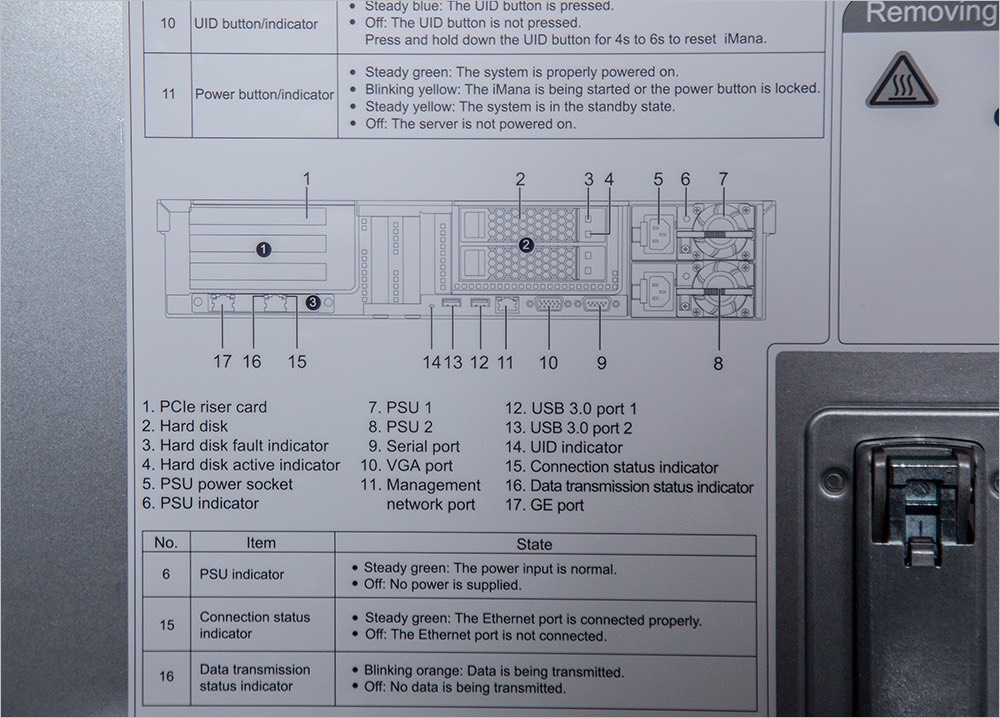
Everything that is on the back panel of the server is described in detail, the meanings of indicators are explained.
 [clickable]
[clickable]In general, the server makes a pretty good impression. Well-made body, good assembly.
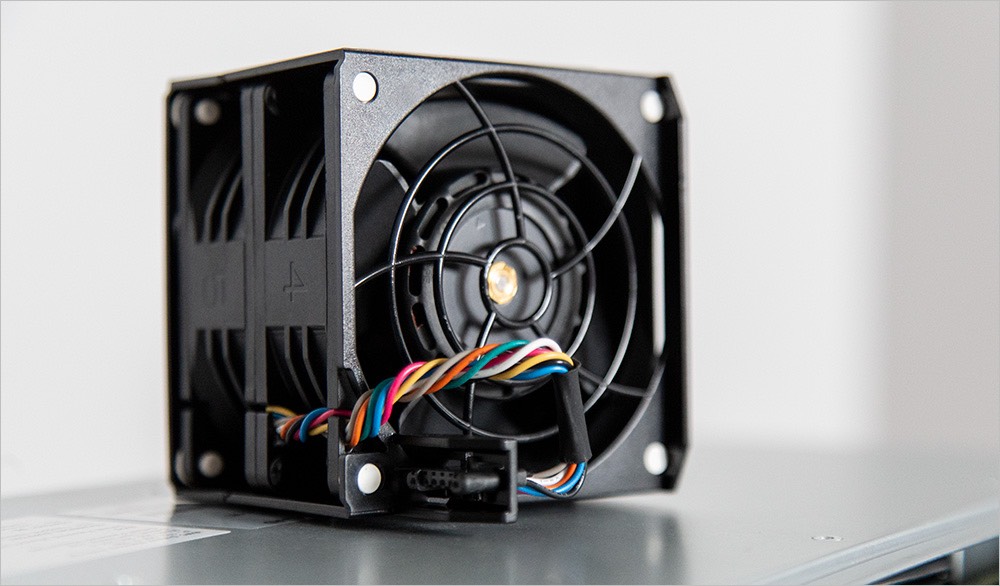

 Fan modules direct airflow to processor heatsinks.
Fan modules direct airflow to processor heatsinks. [clickable] The power supply and the rest of the "stuffing" server. Constructive solutions are quite standard.
[clickable] The power supply and the rest of the "stuffing" server. Constructive solutions are quite standard.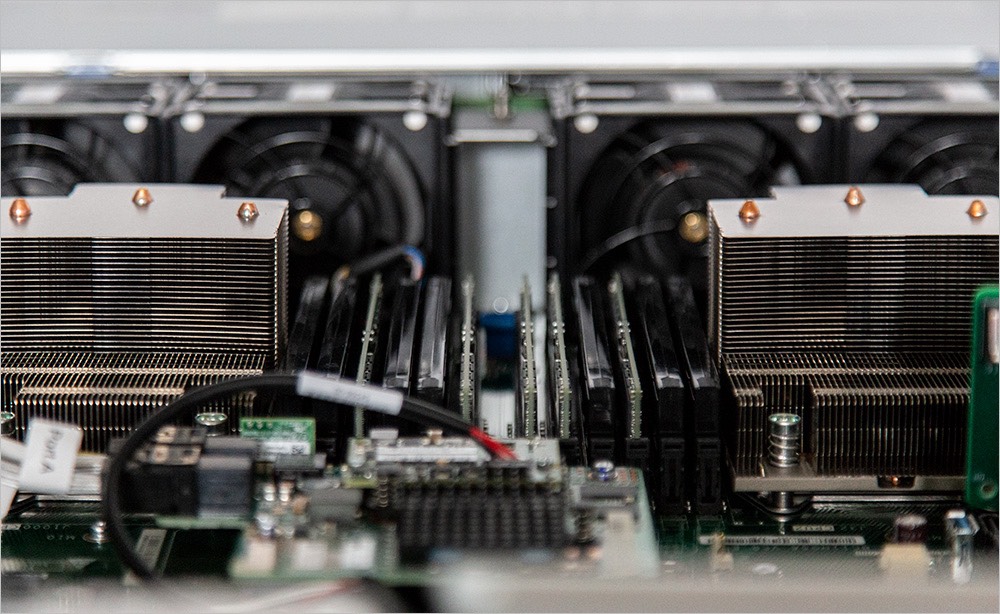
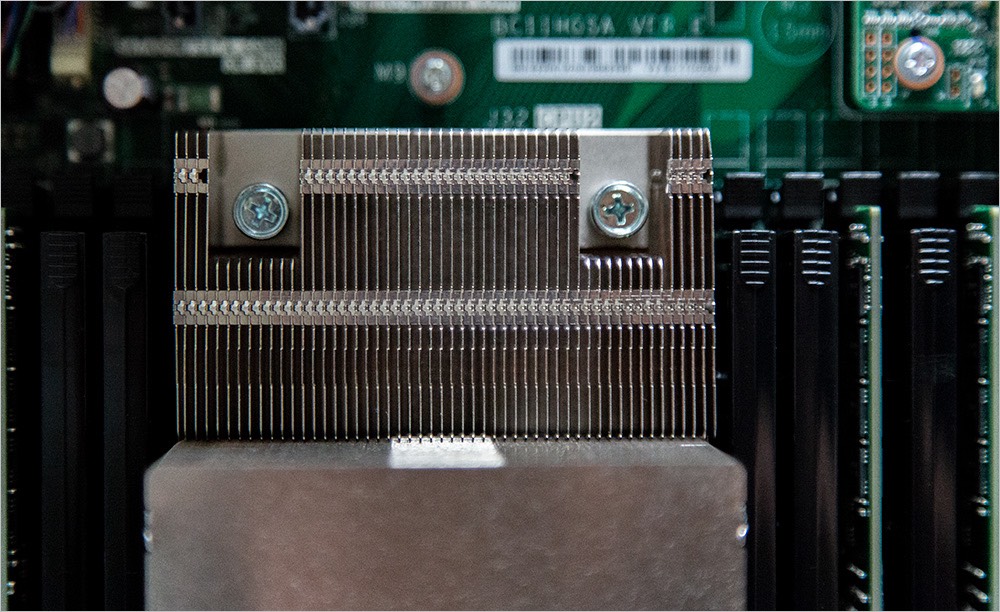
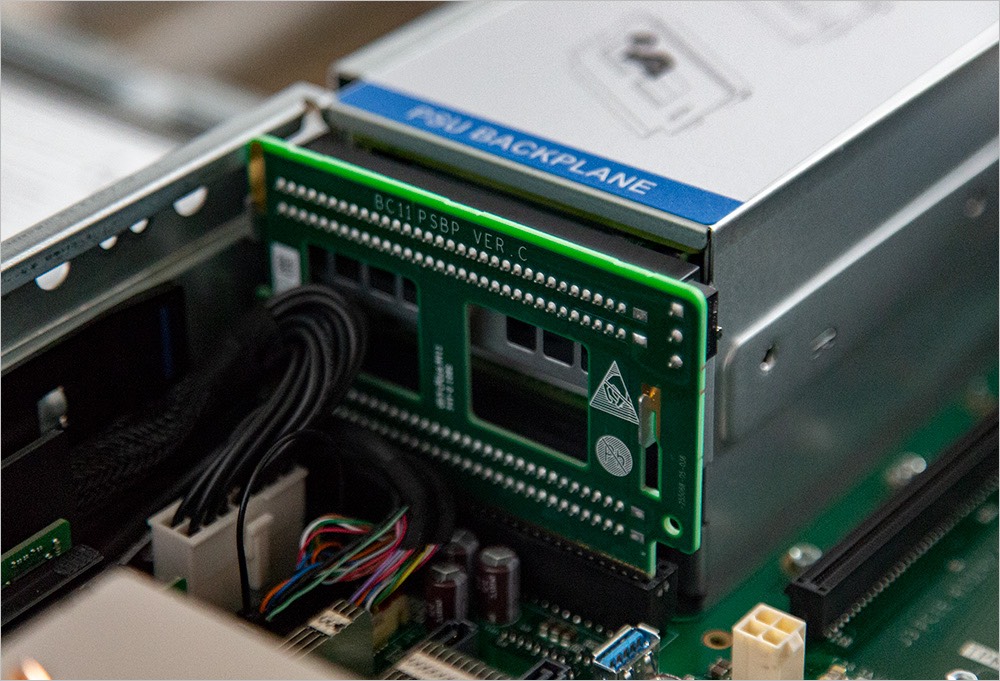


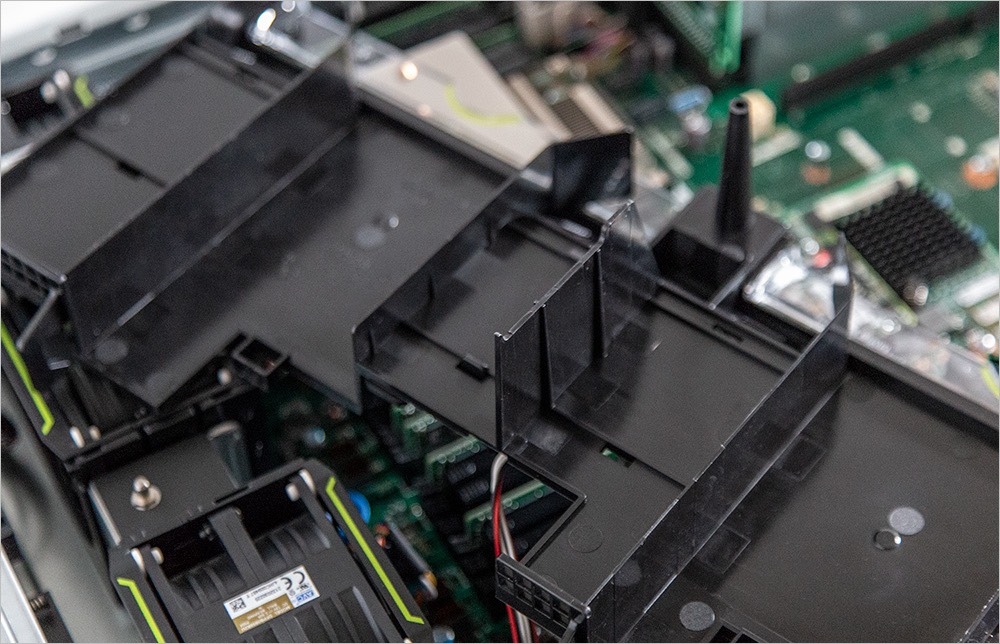 The air duct provides the correct cooling of the server components, first of all the processors.
The air duct provides the correct cooling of the server components, first of all the processors.The RH2288 V3 supports two Intel Xeon E5-2600 v3 (Haswell-EP) or E5-2600 v4 (Broadwell-EP) processors and 16 DDR4 DIMM modules. The processors are connected by a QPI bus with a maximum speed of 9.6 GT / s. Hard disk drives are managed using a RAID or PCH controller card.
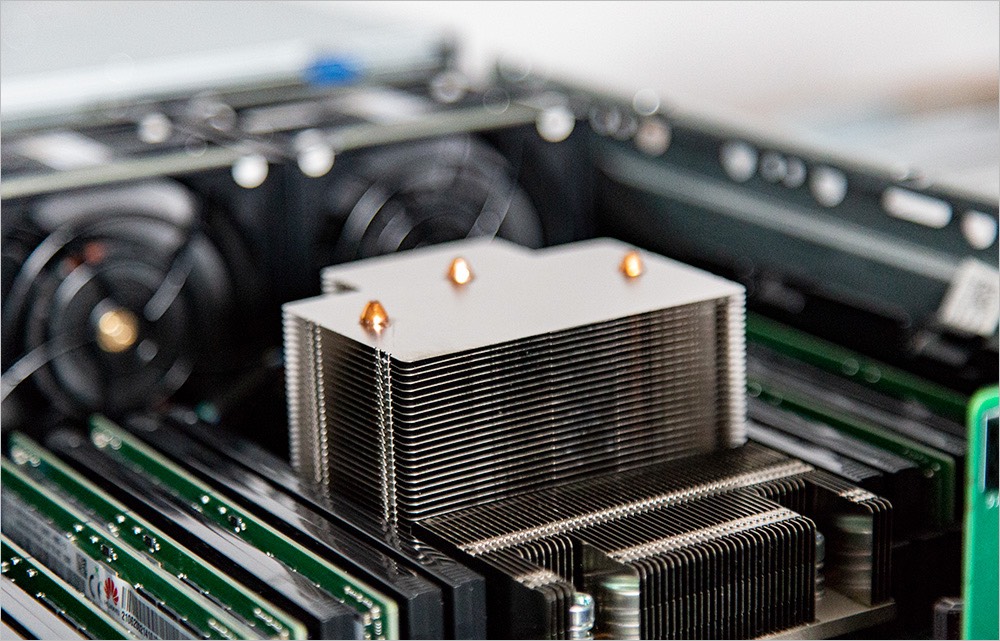 CPU heatsink cope with heat dissipation at any load
CPU heatsink cope with heat dissipation at any loadHere is how it looks in the diagram.

one
| Rear Hard Drive Module
| 2
| PCIe card on the motherboard
|
3
| PCIe card on riser
| four
| I / O module
|
five
| Cable organizer
| 6
| Chassis
|
7
| Power Supply
| eight
| Power supply bus
|
9
| Air duct
| ten
| Super Capacitor Tray
|
eleven
| Supercapacitor
| 12
| Disk Backplane
|
13
| Fan bracket
| 14
| Fan module
|
15
| HDD
| sixteen
| Radiator
|
17
| DIMM
| 18
| CPU
|
nineteen
| RAID controller
| 20
| TPM (optional)
|
21
| Motherboard
| 22
| Satadom
|
23
| LOM
| - | - |
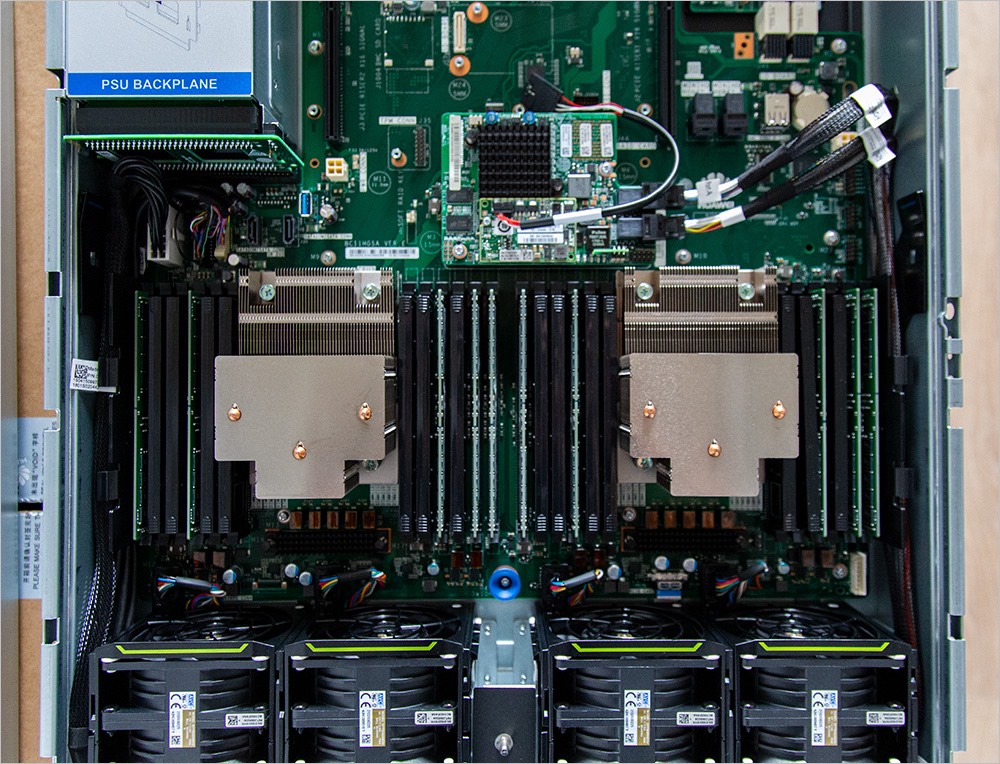
As you can see, the layout is quite dense. RH2288 V3 provides two PCIe 3.0 x8 slots for standard PCIe-cards and supports different types of risers:
1. Raiser 1 with three PCIe3.0 x8 slots for the following devices:
- One full-length full-length PCIe 3.0 x16 card (bandwidth: PCIe 3.0x8).
- One full-size PCIe 3.0 x8 card.
- One full-size PCIe 3.0 x8 card.
2. Raiser 2 with two PCIe3.0 x16 slots for the following devices:
- One full-size full-height PCIe 3.0 x16 card.
- One full-length full-length PCIe 3.0 x16 card (bandwidth: PCIe 3.0x8).
The I / O module supports the following configurations:
- Two standard full-size full-length PCIe 3.0 x8 slots and one standard full-length PCIe3.0 x8 slot with full height.
- Two standard full-size full-size PCIe 3.0 x16 slots (bandwidth of one of them: PCIe 3.0 x8).
- Two 2.5-inch hard drive slots and one standard full-length PCIe 3.0 x16 slot with full length.
- Two 3.5-inch slots for hard drives.
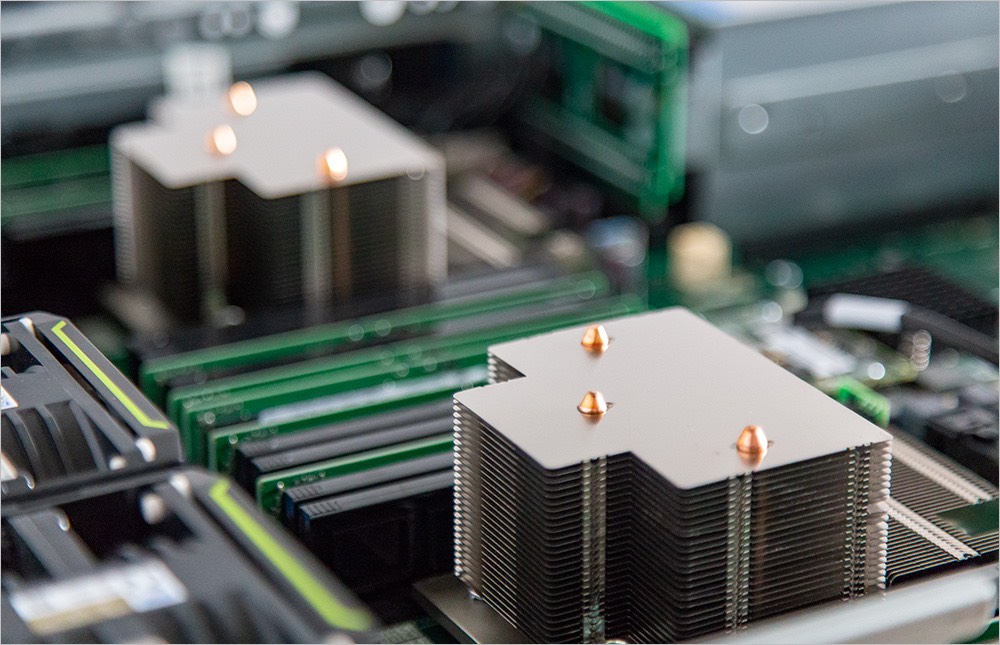
Processors are integrated with memory controllers and PCIe-controllers. The server supports the following processors:
- Intel Haswell-EPE5-2600 v3 8, 10, 12, or 14-core processors with a maximum thermal package (TDP) of 135 watts.
- Intel Broadwell-EP E5-2600 v4 8-, 10-, 12-, 14-, 16- or 18-core processors with TDP up to 135 watts.
You can use GPU graphics accelerators.
The chip of the server is that it contains regular risers for installing additional boards.
 On the left is the controller battery. The controller has a cache capacity of 2 GB. Through SAS-expander, it connects to the disks.
On the left is the controller battery. The controller has a cache capacity of 2 GB. Through SAS-expander, it connects to the disks.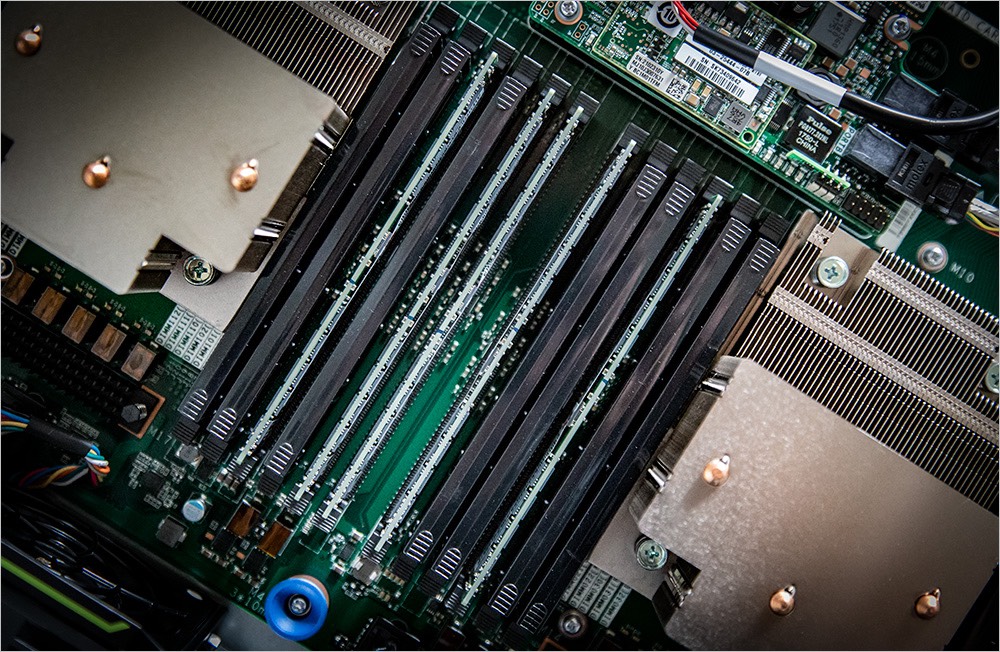 Inside the server, you can install 16 memory modules.
Inside the server, you can install 16 memory modules.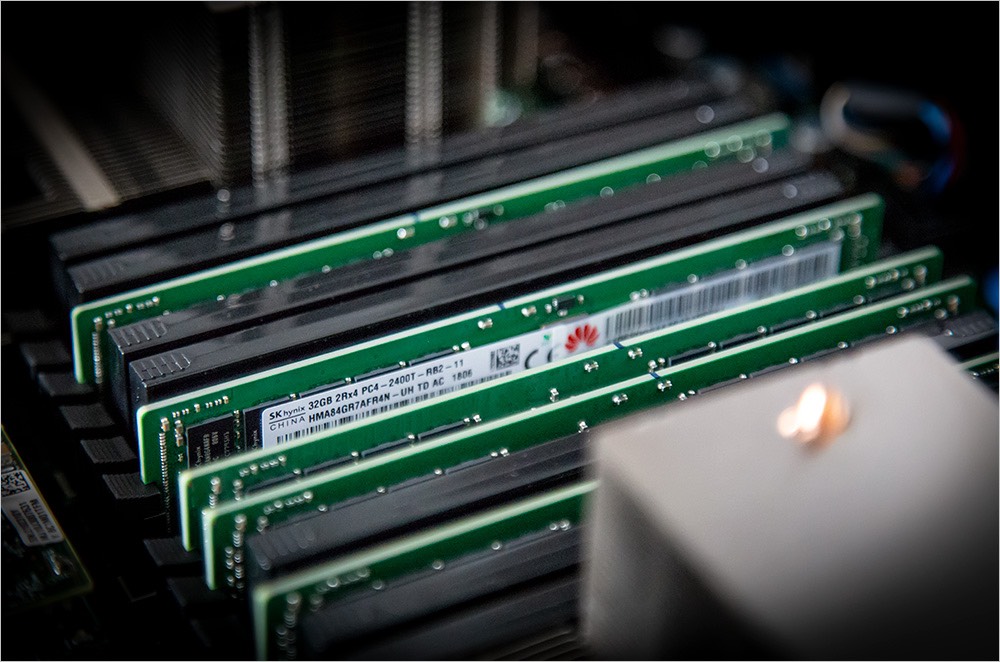 The server has memory modules of 32 GB produced by SK Hynix.
The server has memory modules of 32 GB produced by SK Hynix.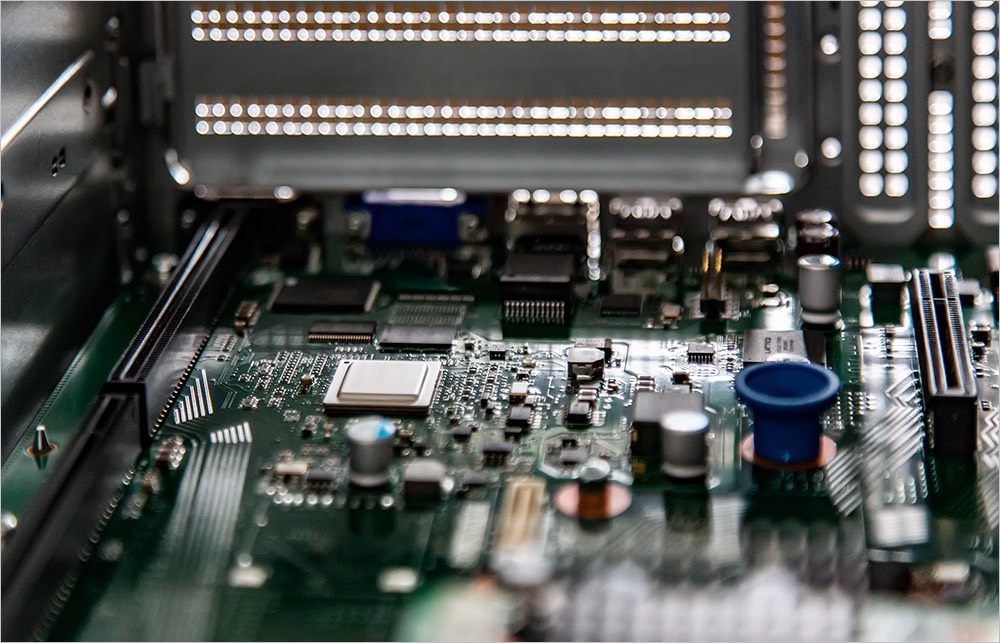 In the center - the same branded controller iBMC.
In the center - the same branded controller iBMC. Supercapacitor is used to protect RAID cache data from power failures.
Supercapacitor is used to protect RAID cache data from power failures.In conclusion, we note an interesting vendor chip: two 32 GB SD cards can be combined into RAID 0. If one of the cards fails, the second one will continue to work. These cards store information that is recorded by the iBMC control controller, that is, in the event of a server failure, the information is reset to the card, and you can see what was the cause of the failure. Competitors either do not have such a solution, or it is very expensive. In general, Huawei servers are at least as competitive as competitors.
Huawei data center solutions help hosting providers, data center owners to grow their business with optimal cost, rapid deployment, intelligent management and reliability. So, for example, in RUVDS for the entire time of work with this equipment, none of the servers or their components failed, creating an emergency situation or, especially, data loss. Only isolated cases of problems with RAM and hard disk, which were solved very quickly thanks to the Next Business Day warranty, are noted. Hard drives in the RAID array were replaced in hot mode, and the RAM was replaced once and with minimal downtime for clients to restart the server. Power supplies, processors, controllers on these servers during the operation period did not fail.
Ask questions in the comments.
By the way, we are sometimes reproached for posting only translations. Writing author articles is often really difficult, and I want the blog to be alive. And this post is straightforward-authoring - if you like it, then the high rating will encourage us to write this more often;) Well, and the traditional discount:
